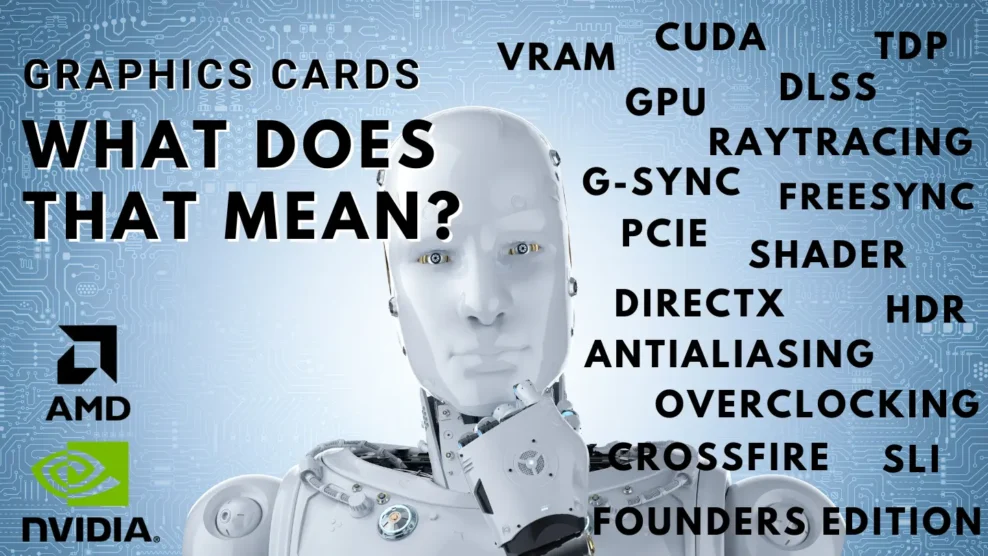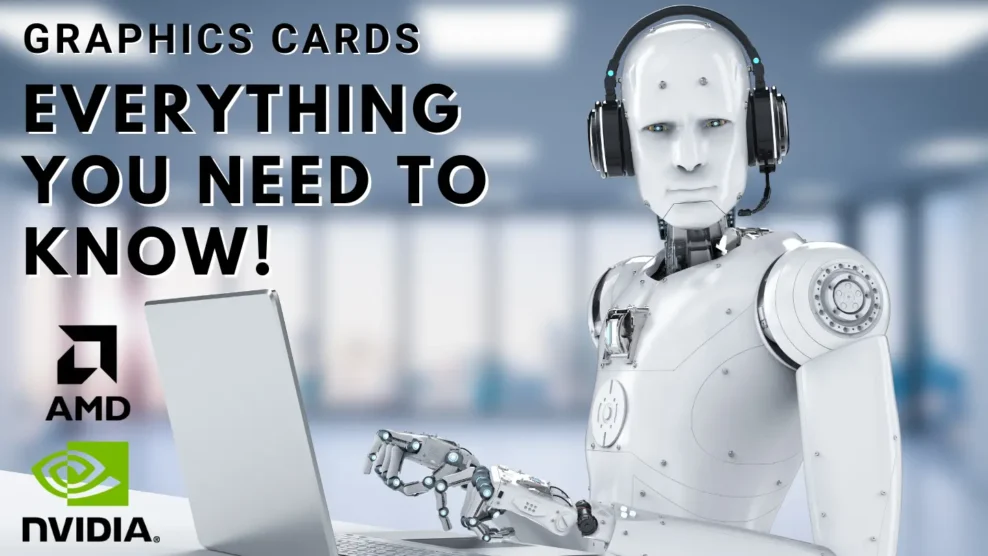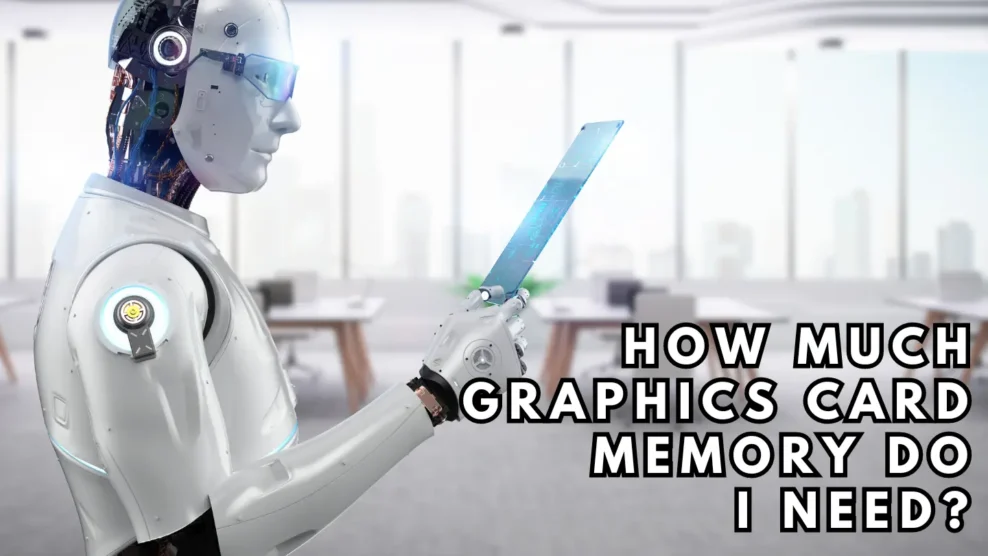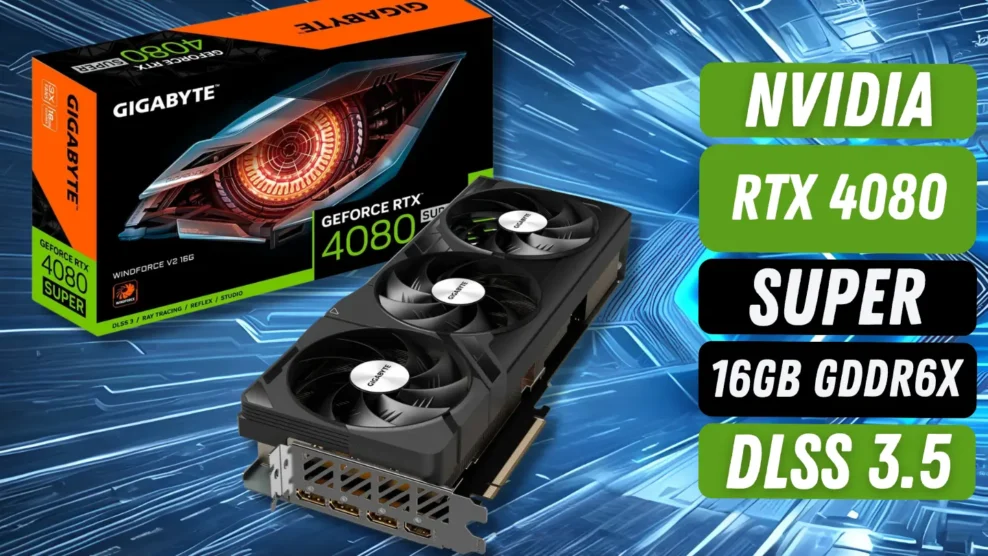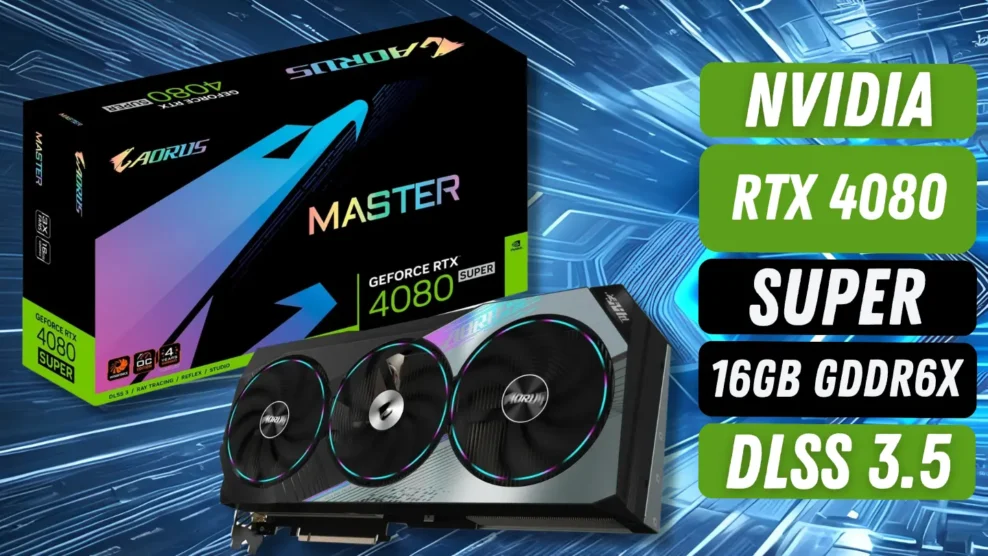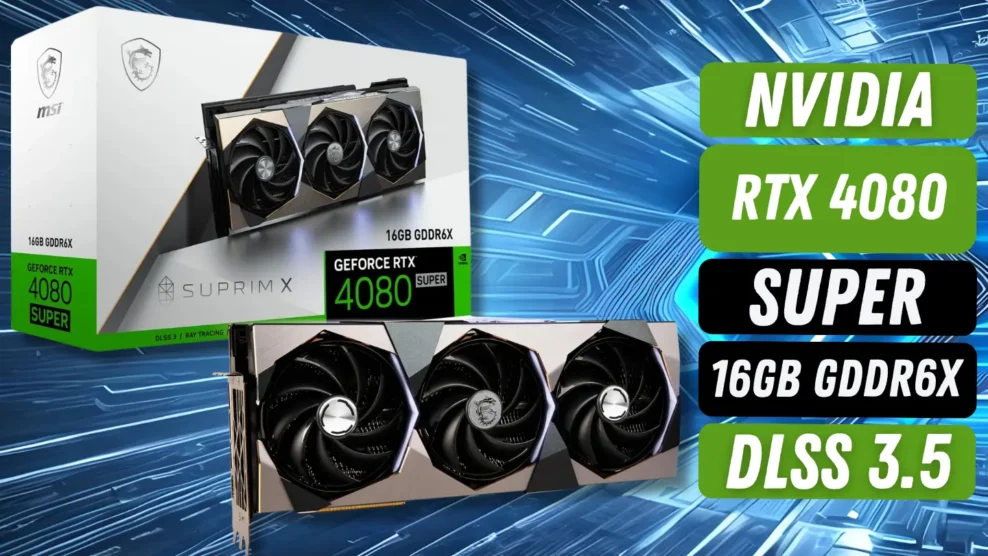Graphics cards are an essential component of any computer, especially when it comes to gaming, professional graphic design, or data-intensive calculations. In 2024, technologies surrounding graphics cards have advanced rapidly, leading to a plethora of options and features you should be aware of to make the best decision for your needs. In this article, you will learn all the essential information about the latest trends, technologies, and selection criteria for graphics cards in 2024.
1. Latest Technologies and Trends
Ray Tracing
Ray tracing is a technology that enables more realistic lighting, shadows, and reflections in digital images. In 2024, ray tracing is no longer exclusive to high-end graphics cards but has become a standard feature in many mid-range models. Games and applications that support ray tracing offer impressive visual quality that comes close to reality.
AI-Powered Performance Enhancements
Artificial intelligence (AI) plays an increasingly important role in optimizing graphics performance. Manufacturers like NVIDIA and AMD use AI to improve image quality without compromising performance. Features like NVIDIA’s DLSS (Deep Learning Super Sampling) utilize AI to upscale images at lower resolutions, resulting in improved performance while maintaining high image quality.
Energy Efficiency
With growing awareness of environmental issues and sustainability, graphics card manufacturers in 2024 have placed a stronger emphasis on energy efficiency. New models not only offer more performance but are also designed to consume less energy. This is achieved through more advanced manufacturing processes and intelligent energy management systems.
2. Key Selection Criteria
Performance
Performance is perhaps the most obvious criterion when purchasing a graphics card. Depending on your requirements, whether for demanding gaming, professional graphic design, or complex calculations, you should select the graphics card that best meets your needs. Pay attention to the number of CUDA cores (for NVIDIA) or stream processors (for AMD), clock frequency, and VRAM (video memory).
Compatibility
Ensure that the graphics card is compatible with your system. This includes both the physical size (whether it fits into your case) and the interfaces (e.g., PCIe 4.0/5.0). Additionally, check if your power supply provides enough power to supply the graphics card.
Price-Performance Ratio
Graphics cards can be a significant investment. It is essential to find a model that offers good value for money. While high-end graphics cards offer the best performance, not everyone needs them for their specific requirements. Often, mid-range models provide a more balanced ratio of price to performance for most users.
Graphics Card Performance Class Comparison
| Performance Class | Nvidia | AMD |
|---|---|---|
| High-End 1 | RTX 4090 (24 GB) | – |
| High-End 2 | RTX 4080 Super (16 GB) RTX 4080 (16 GB) | RX 7900 XTX (24 GB) |
| High-End 3 | RTX 4070 Ti Super (16 GB) RTX 3090 Ti (24 GB) RTX 3090 (24 GB) RTX 4070 Ti (12 GB) RTX 4070 Super (12 GB) | RX 7900 XT (20 GB) RX 7900 GRE (16 GB) |
| High-End 4 | RTX 3080 Ti (12 GB) RTX 4070 (12 GB) RTX 3080 (12 GB/10 GB) | RX 6950 XT (16 GB) RX 6900 XT (16 GB) RX 7800 XT (16 GB) RX 6800 XT (16 GB) |
| Mid-Range 5 | RTX 3070 Ti (8 GB) RTX 3070 (8 GB) RTX 2080 Ti (11 GB) RTX 4060 Ti (16 GB) RTX 4060 Ti (8 GB) | RX 7700 XT (12 GB) RX 6800 (16 GB) |
| Mid-Range 6 | RTX 3060 Ti (8 GB) RTX 2080 Super (8 GB) RTX 4060 (8 GB) RTX 2080 (8 GB) | RX 6750 XT (12 GB) RX 6700 XT (12 GB) |
| Mid-Range 7 | RTX 3060 (12 GB) RTX 3060 (8 GB) RTX 2070 Super (8 GB) GTX 1080 Ti (11 GB) | RX 7600 XT (16 GB) RX 7600 (8 GB) RX 6700 (10 GB) RX 6650 XT (8 GB) RX 6600 XT (8 GB) RX 5700 XT (8 GB) |
| Mid-Range 8 | RTX 2070 (8 GB) RTX 2060 Super (8 GB) | RX 6600 (8 GB) RX 5700 (8 GB) |
Top 30 graphics cards of 2024
| Rank | Device | 3DMark Graphics Score | Value for Money | Popularity |
|---|---|---|---|---|
| 1 | NVIDIA GeForce RTX 4090 | 36529 | 22 | 2.2 |
| 2 | AMD Radeon RX 7900 XTX | 30403 | 30 | 1.3 |
| 3 | NVIDIA GeForce RTX 4080 SUPER | 28507 | 0.2 | – |
| 4 | NVIDIA GeForce RTX 4080 | 28213 | 23 | 1.2 |
| 5 | AMD Radeon RX 7900 XT | 26507 | 29 | 0.6 |
| 6 | NVIDIA GeForce RTX 4070 Ti SUPER | 24341 | 0.1 | – |
| 7 | NVIDIA GeForce RTX 4070 Ti | 22800 | 28 | 1.4 |
| 8 | NVIDIA GeForce RTX 3090 Ti | 22014 | 11 | 0.1 |
| 9 | NVIDIA RTX 4090 (notebook) | 21722 | 0.4 | – |
| 10 | AMD Radeon RX 7900 GRE | 21641 | 0.0 | – |
| 11 | AMD Radeon RX 6950 XT | 21431 | 16 | 0.5 |
| 12 | NVIDIA GeForce RTX 4070 SUPER | 21096 | 0.2 | – |
| 13 | AMD Radeon RX 6900 XT | 20930 | 20 | 0.6 |
| 14 | AMD Radeon RX 7800 XT | 20011 | 0.5 | – |
| 15 | NVIDIA GeForce RTX 3090 | 19881 | 13 | 0.7 |
| 16 | NVIDIA GeForce RTX 3080 Ti | 19732 | 16 | 0.9 |
| 17 | AMD Radeon RX 6800 XT | 19418 | 29 | 0.9 |
| 18 | NVIDIA RTX 4080 (notebook) | 18976 | 0.5 | – |
| 19 | NVIDIA GeForce RTX 3080 12GB | 18753 | 23 | 0.2 |
| 20 | NVIDIA GeForce RTX 4070 | 17869 | 29 | 1.1 |
| 21 | NVIDIA GeForce RTX 3080 LHR | 17695 | 0.7 | – |
| 22 | NVIDIA GeForce RTX 3080 | 17690 | 25 | 0.8 |
| 23 | AMD Radeon RX 7700 XT | 17060 | 0.0 | – |
| 24 | AMD Radeon RX 6800 | 16331 | 28 | 0.3 |
| 25 | NVIDIA Titan RTX | 15148 | 6 | 0.0 |
| 26 | NVIDIA GeForce RTX 3070 Ti | 14943 | 24 | 0.7 |
| 27 | NVIDIA GeForce RTX 2080 Ti | 14633 | 14 | 0.4 |
| 28 | NVIDIA GeForce RTX 3070 LHR | 13629 | 0.5 | – |
| 29 | Intel Arc A770 | 13598 | 41 | 0.1 |
| 30 | NVIDIA GeForce RTX 3070 | 13592 | 27 | 0.9 |
This table is based on the results of user benchmarks, who tested their graphics cards using the popular and free benchmark program 3DMark. It provides you with a comprehensive overview of the most powerful graphics cards on the market. The ratings reflect the graphics performance measured by the 3DMark Graphics Score, with factors such as popularity also taken into account.
This information is particularly useful for identifying the top performers and making an informed decision when purchasing a graphics card.
How much graphics card memory do I need?

Are 16 GB of video memory faster than 12 GB of video memory on a graphics card? Can I play games faster, with more frames per second (FPS) as a result?
The amount of video memory (VRAM) on a graphics card is not a direct indicator of the speed of the graphics card or how fast games run in terms of frames per second (FPS). Video memory is important for storing textures, shaders, and other graphic data needed for rendering game scenes. Larger amounts of video memory can be particularly advantageous at high resolutions and demanding graphic settings as they allow for more data to be stored directly on the graphics card, reducing potential bottlenecks.
Influence of VRAM on gaming speed:
- Resolution and Detail Level: Games with higher resolutions and detail levels benefit from more VRAM as more graphic data needs to be stored simultaneously. If a game requires more VRAM than a graphics card offers, performance may suffer because data needs to be swapped between VRAM and the slower system memory (RAM).
- FPS and Graphics Performance: FPS in games are primarily determined by the processing power of the graphics card, including factors such as GPU clock speed, architecture, and the number of compute units (CUDA cores for NVIDIA, Stream processors for AMD). More VRAM does not directly lead to higher FPS, but it allows the graphics card to handle more demanding graphic settings or higher resolutions without compromising performance.
Other Factors:
- Games and Applications: VRAM requirements vary depending on the game and application. Some modern games and graphic applications may benefit from 16 GB of VRAM, especially at 4K resolution or when using high-end texture packs.
- System Balance: Overall gaming performance also depends on other components such as CPU, RAM, and storage. A balanced system configuration is crucial to avoid bottlenecks and achieve the best possible performance.
Conclusion:
16 GB of VRAM offer more flexibility and future-proofing benefits compared to 12 GB, especially for games and applications with high graphic demands. However, more VRAM alone does not directly result in an increase in FPS. Choosing a graphics card should be based on an overall assessment of its performance features and how these features align with your specific gaming requirements.
What does this mean for graphics cards?

1. GPU (Graphics Processing Unit)
The main computing unit of a graphics card, responsible for rendering images and videos. It performs complex calculations for graphics and often other tasks as well.
2. VRAM (Video Random Access Memory)
Dedicated memory on the graphics card used for storing images, textures, and other data necessary for rendering.
3. CUDA Cores (NVIDIA)
Specialized units in NVIDIA graphics cards for parallel processing of calculations, crucial for graphic rendering and some types of data analysis.
4. Stream Processors (AMD)
The AMD counterpart to NVIDIA’s CUDA cores, representing the processing power in AMD graphics cards.
5. Ray Tracing
A technique that produces realistic lighting effects in 3D environments by simulating the paths that light rays take when interacting with objects.
6. DLSS (Deep Learning Super Sampling)
A technology developed by NVIDIA that enhances image quality using AI while simultaneously reducing GPU load to enable higher FPS.
7. FreeSync (AMD) / G-Sync (NVIDIA)
Technologies for synchronizing the refresh rate between the monitor and graphics card to avoid screen tearing and stuttering.
8. TDP (Thermal Design Power)
A measure of the maximum amount of heat a component can generate; important for planning a computer’s cooling system.
9. PCIe (Peripheral Component Interconnect Express)
A high-speed interface standard for connecting peripheral devices, such as graphics cards, to the motherboard.
10. Shader
Programs executed on the GPU that determine how pixels and vertices are rendered in a 3D environment, including effects such as lighting and shadows.
11. DirectX/OpenGL/Vulkan
Interfaces (APIs) for game development and graphics-intensive applications that facilitate communication between software and hardware.
12. Antialiasing
A technique for reducing jagged edges (“jaggies”) at edges to achieve smoother graphics rendering.
13. Texture Mapping
A process where a 2D texture is applied to a 3D surface to increase detail and realism.
14. FPS (Frames Per Second)
The number of frames rendered per second; an important indicator of performance in video games.
15. Resolution
The number of pixels that can be displayed on the screen, usually expressed as width x height (e.g., 1920×1080).
16. Aspect Ratio
The ratio between the width and height of the screen or image, e.g., 16:9 for most modern monitors.
17. Refresh Rate
The number of times a screen can refresh its image per second, measured in Hertz (Hz).
18. V-Sync (Vertical Sync)
A technology that synchronizes the graphics card’s frame rate with the monitor’s refresh rate to avoid tearing.
19. HDR (High Dynamic Range)
A technology that enables a wider range of brightness levels and colors, resulting in more realistic and vibrant images.
20. Multi-GPU
The use of more than one graphics card in a computer system to enhance graphics performance, known under brand names like SLI (NVIDIA) and CrossFire (AMD).
21. Anisotropic Filtering (AF)
A texture filtering technique that sharpens slanted surfaces, particularly visible on the ground and walls in games, to improve detail accuracy in the distance.
22. Texture Compression
A method of reducing the file size of textures to save space and improve performance without significantly degrading image quality.
23. Pixel Shader
A program or function in the graphics card that determines how the pixels (the smallest units of an image) are displayed on the screen, including color and brightness.
24. Vertex Shader
A type of shader that processes the properties of vertices (vertices) in a 3D environment, including position, lighting, and other visual effects.
25. Geometry Shader
A shader that comes after the vertex shader and provides the ability to generate or destroy geometry by adding or removing primitives (such as points, lines, and triangles).
26. Tessellation
A technology that dynamically increases the number of triangles in a 3D model to create more detailed and realistic graphics.
27. Compute Shader
A flexible shader type used for a variety of non-graphical computation tasks, such as physics simulations or artificial intelligence in games.
28. Fill Rate
The speed at which a graphics card can process pixels (Pixel Fill Rate) or textures (Texture Fill Rate), an important factor for graphics performance.
29. Bus Width
The data transfer width between the GPU and the VRAM, measured in bits. A wider bus width allows for faster data transfer, which can improve performance.
30. Memory Bandwidth
The total amount of data that can be transferred per second between the GPU and the VRAM, measured in gigabytes per second (GB/s). Higher memory bandwidth supports higher resolutions and more detailed textures.
31. API (Application Programming Interface)
A collection of routines, protocols, and tools for creating software and applications. Graphics APIs like DirectX, Vulkan, and OpenGL provide developers with an interface to access hardware functions of the graphics card.
32. Ray Tracing Cores / RT Cores (in NVIDIA)
Specialized computing units in some modern graphics cards designed specifically to accelerate ray tracing calculations, enabling more realistic lighting and shadows in real-time.
33. Tensor Cores (in NVIDIA)
Computing units in some NVIDIA graphics cards specifically designed to accelerate AI computations and deep learning, including improving image quality through technologies like DLSS.
34. Overclocking
The process of increasing the clock rate of a graphics card beyond the manufacturer’s specified specifications to boost performance, but it can also increase the risk of overheating or instability.
35. Cooling Solutions
Systems for cooling the graphics card, including air cooling (using fans) and liquid cooling, to maintain operating temperature within safe limits and maximize performance.
36. CrossFire (AMD) and SLI (NVIDIA)
Technologies that allow connecting multiple graphics cards in a single computer system and working together to enhance graphics performance. However, these technologies are becoming less supported in newer generations of graphics cards and games.
37. Founders Edition
A designation for graphics cards sold directly by NVIDIA, often featuring a reference design with special cooling and performance configurations.
38. Aftermarket Cards
Graphics cards manufactured by third-party companies such as ASUS, MSI, and Gigabyte, often with modified designs, improved cooling systems, and sometimes higher clock rates compared to standard or Founders Edition models.
39. GPGPU (General-Purpose Computing on Graphics Processing Units)
The use of graphics cards for general computing operations that are not necessarily related to graphics processing, such as scientific computations, cryptocurrency mining, and data analysis.
40. DisplayPort / HDMI
Standards for video and audio connections between graphics cards and monitors or televisions. DisplayPort supports higher resolutions and refresh rates than HDMI, although both are commonly used in modern gaming setups.
41. HDR (High Dynamic Range)
Expands the color and contrast range of images and videos, making dark areas darker and bright areas brighter for a more realistic visual experience.
42. Luminance
Refers to the brightness in images or videos, measured in nits. Higher luminance values enable more vibrant and brighter images.
43. Quantum Dot
A technology used in some displays to achieve a wider color gamut and higher brightness levels. It enhances image quality by using tiny particles that intensify colors when illuminated.
44. Anti-Aliasing (AA)
A technique for smoothing edges in digital images to reduce the staircase effect (jaggies) and improve visual quality. Examples include MSAA, FXAA, and TAA.
45. MFAA (Multi-Frame Anti-Aliasing)
An advanced anti-aliasing technique by NVIDIA aimed at improving image quality by increasing performance efficiency compared to traditional AA methods.
46. HBAO+ (Horizon-Based Ambient Occlusion Plus)
A technique for enhancing shadows and depth effects in 3D environments to give scenes a more realistic appearance.
47. PhysX
A physics engine for real-time physics in computer games. Developed by NVIDIA, it enables more realistic simulations of environments, objects, and fluids.
48. GDDR Memory (Graphics Double Data Rate)
A type of memory specifically designed for graphics cards to support high bandwidths for processing graphics. Variants include GDDR5, GDDR6, and GDDR6X.
49. Ray Tracing Cores / RT Cores
Specialized hardware units in some modern graphics cards optimized for computing ray tracing tasks to enable more realistic lighting effects in real-time.
50. NVIDIA Ampere / AMD RDNA
Designations for graphics processing architectures. Ampere is a GPU architecture by NVIDIA, while RDNA (and RDNA 2) were developed by AMD. Both offer improvements in performance and energy efficiency.
51. Sampling
Refers to the process of collecting image points (pixels) or texture data for image processing. Higher sampling rates can improve image quality but require more computational power.
52. Bandwidth Overhead
Refers to the additional bandwidth requirement caused by certain technologies or processing stages, which can affect performance if sufficient bandwidth is not available.
53. Dynamic Resolution Scaling
A technique that dynamically adjusts the resolution of games to maintain a stable frame rate. If the scene becomes too complex and FPS drops, the resolution is reduced to improve performance.
54. Frame Buffer
A portion of VRAM used to store the current frame displayed on the screen. A larger frame buffer can support higher resolutions and color depths.
55. Vulkan API
A cross-platform graphics interface (API) designed for high efficiency and performance in modern graphics applications and games. Vulkan provides more direct control over the GPU and enhances performance and compatibility across various devices.
56. Texture Fill Rate
The speed at which a graphics card can process textures and apply them to 3D models, measured in billions of texture pixels per second. A higher value indicates a better ability to render detailed textures quickly.
57. Pixel Fill Rate
The maximum number of pixels a graphics card can render per second. This rate is crucial for overall performance, especially at high resolutions.
58. Latency
The delay between issuing a command by the GPU and displaying the result on the screen. Lower latency values are crucial for a smoother gaming experience.
59. ASIC (Application-Specific Integrated Circuit)
A chip designed for a very specific task, as opposed to general-purpose processors. In the graphics card world, this often refers to specialized processors or cores within the GPU.
60. Thermal Throttling
A protective mechanism in graphics cards (and other computer components) that automatically reduces performance when a certain temperature is exceeded to avoid overheating damage.
61. Boost Clock
The maximum speed at which the GPU can automatically increase its clock frequency to enhance performance under load, as long as thermal and power limits allow.
62. Base Clock
The default operating frequency of the GPU during normal operation. It is the guaranteed minimum performance speed of the graphics card.
63. Memory Clock
The speed at which the VRAM (Video Random Access Memory) on the graphics card can process data. Higher memory clock speeds can improve overall performance, especially in graphics-intensive applications.
64. ROPs (Raster Operations Pipelines)
Components of a GPU responsible for rendering pixels and for final stage operations such as antialiasing. The number of ROPs can affect a graphics card’s ability to handle high resolutions and complex image quality settings.
65. TMUs (Texture Mapping Units)
Units within a GPU responsible for applying textures to 3D models. A higher number of TMUs can enhance texture processing efficiency and thus graphics performance.
66. Die Size
The physical size of the silicon chip of a GPU, measured in square millimeters. A smaller die size often can improve efficiency and power consumption, while a larger die provides more space for transistors and potentially more performance.
67. Fabrication Process
Refers to the semiconductor manufacturing process, measured in nanometers (nm). A more advanced (smaller) fabrication process typically enables more energy-efficient and powerful chips.
68. Power Connectors
The connectors on a graphics card that link it to the power supply to draw power. Common types include 6-pin, 8-pin, or 12-pin, and some cards require more than one connector.
69. SLI Bridge / CrossFire Bridge
A physical connection used between two or more graphics cards of the same type to combine their processing power (SLI for NVIDIA, CrossFire for AMD). This technology is increasingly being replaced by software-based solutions.
70. Display Outputs
The various ports on a graphics card through which the display signal is transmitted to monitors. Common types include HDMI, DisplayPort, DVI, and VGA.
71. Heatsink
A passive cooling element on graphics cards that dissipates heat away from the GPU and other components, often used in conjunction with fans to enhance heat dissipation efficiency.
72. Liquid Cooling
A cooling technique where liquid is used to dissipate heat from the GPU. Typically provides better cooling performance than air cooling but is more complex to install and maintain.
73. Zero RPM Mode
A feature of modern graphics cards where the fans are completely stopped under light load conditions or idle to minimize noise.
74. Backplate
A metal or plastic plate on the back of a graphics card that contributes to stability, aesthetics, and sometimes heat dissipation.
75. Frame Pacing
A technology that controls the timing between rendered frames to ensure smoother gameplay and minimize stuttering.
76. GPGPU (General-Purpose Computing on Graphics Processing Units)
The use of graphics cards for general computing tasks beyond graphics processing, such as data analysis or scientific simulations, thanks to their parallel processing capabilities.
77. DirectX Raytracing (DXR)
A part of the DirectX 12 API that provides developers with tools to implement ray tracing in games and applications to produce more realistic lighting and shadows.
78. Shader Model
A version specification for shader programs that determines which graphic effects and features are supported by a graphics card. Each new version expands the capabilities for developers to create visual effects.
79. VR Ready
A designation for graphics cards that are powerful enough to run virtual reality applications and games with acceptable performance.
80. External Graphics Card (eGPU)
A graphics card housed outside the computer in a special enclosure and connected to a laptop or PC via an interface such as Thunderbolt to enhance graphics performance.
81. ASIC (Application-Specific Integrated Circuit)
A chip developed for a specific application, in the context of graphics cards often referring to specialized processors or cores optimized for specific graphics or computation tasks.
82. Rasterization
The process of converting vector graphics (such as 3D models) into raster graphics (pixel images), the fundamental mechanism by which graphics cards convert 3D scenes into the image displayed on the screen.
83. Upscaling
A technique for increasing the resolution of a digital image by artificially increasing the number of pixels to enable higher resolution on output devices, often used in combination with techniques like DLSS for improved image quality.
84. FidelityFX (AMD)
A collection of image enhancement and upscaling technologies from AMD aimed at improving graphics quality without significantly impacting performance.
85. Ray Query
A programming model within ray tracing APIs that allows developers to query whether and how rays intersect with specific objects in the scene to calculate realistic lighting effects.
86. Mipmap
A collection of preprocessed textures at various resolutions used in 3D graphics applications to improve efficiency and visual quality when texturing objects from different distances.
87. Occlusion Culling
An optimization technique in 3D graphics processing that avoids rendering objects or parts thereof that are occluded from the camera view to improve performance.
88. VRS (Variable Rate Shading)
A technique that allows varying the shading rate for different areas of an image to concentrate processing power where it is most needed and reduce it in less detailed areas.
89. Binning
A process where 3D objects in a scene are grouped based on which pixels they influence on the screen. This improves efficiency by rendering only the necessary objects.
90. Front-End Processing
The phase in the graphics pipeline that deals with preparing and organizing data before actual rendering, including tasks such as vertex transformation and primitive clipping.
91. Pixel Pipeline
A part of the graphics card architecture responsible for processing pixels, including steps such as texturing and rasterization, culminating in the final display on the screen.
92. Hardware Acceleration
The use of specialized hardware components within the graphics card to perform certain calculations faster than would be possible with general CPU processing.
93. LOD (Level of Detail)
A technique for adjusting the complexity of a 3D model based on its distance from the camera to optimize performance by using detailed models only when viewed up close.
94. SSAO (Screen Space Ambient Occlusion)
A rendering technique used to enhance depth and volume in scenes by adding realistic shading in corners and crevices where objects meet.
95. Texture Swizzling
A method of rearranging texture data in a way that optimizes memory access for reading and writing textures, which can improve performance.
96. Analog Signal
A signal that exhibits continuous variations (as opposed to digital signals), formerly used for transmitting images from graphics cards to monitors via VGA connections but largely supplanted by digital standards.
97. Digital Signal
A signal that transmits information as binary data (0s and 1s), used in modern graphics cards for image transmission via HDMI, DisplayPort, and DVI connections.
98. Multi-Threading
The ability of the graphics card to handle multiple tasks or threads simultaneously to improve overall performance, particularly useful in complex scenes or applications.
99. GPU-Z
A popular diagnostic tool that provides detailed information about the graphics card, including specifications, clock rates, and temperatures, helpful for monitoring and troubleshooting.
100. Artifacting
Visual glitches that can occur in graphics output, often due to overheating, overclocking, or damage to the graphics card, characterized by unwanted textures, colors, or patterns.


